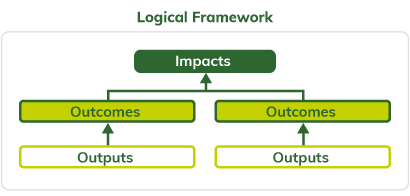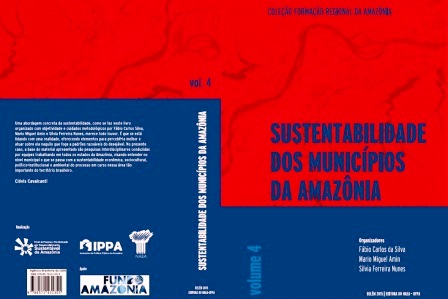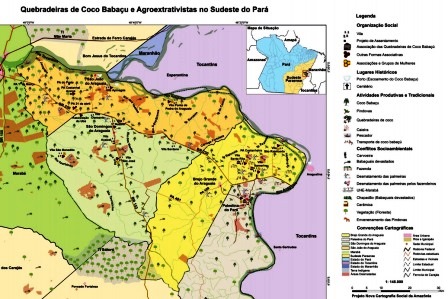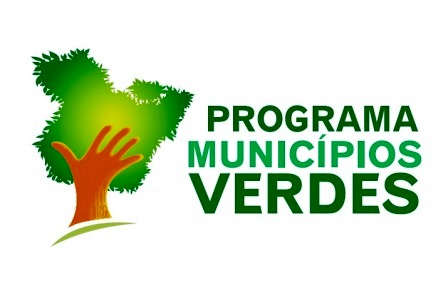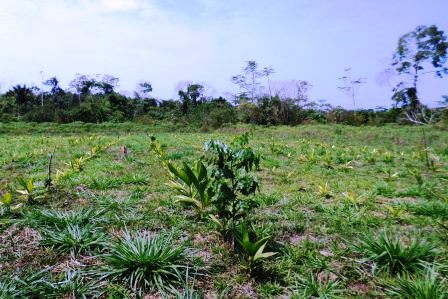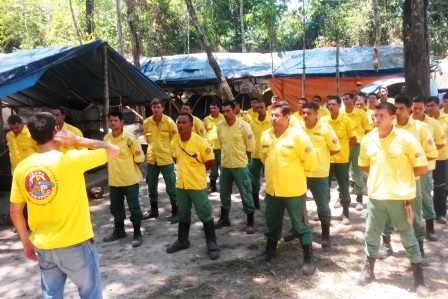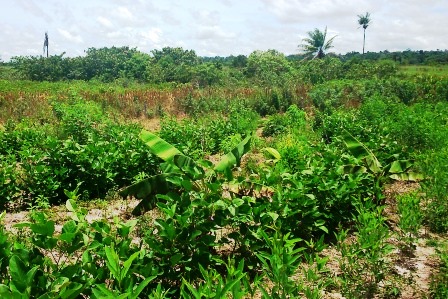RESULT AND IMPACT INDICATORS
The project activities contributed to the results related to the “monitoring and control” component (2) of the Amazon Fund’s Logical Framework.
Direct effect 2.1:CBMTO better structured for monitoring and combating deforestation caused by forest fires and illegal burn-offs.
The main indicators agreed for the monitoring of this objective were:
- Number of servants effectively trained using the acquired knowledge (outcome indicator)
Goal: not set | Result achieved: 466
It was verified that 466 managers of CBMTO and partners, trained through workshops on mapping risk areas, coordination of firefighting operations and analysis and interpretation of images, are using the knowledge acquired.
- Number of citizens trained (output indicator)
Goal: 500 | Result achieved: 1,626
During the project, forest fire prevention and fighting techniques were disseminated through the training of 1,626 civil firefighters
- Number of heat spots (outcome indicator)
Goal: not set | Result achieved: 7,108
In 2018, 7,108 heat spots were recorded in the state of Tocantins. As a baseline for this indicator, 14,132 heat spots were considered – an estimation based on the average of the period from 2003 to 2012 (ten years prior to 2013, first year of implementation of the project¹). Therefore, during the project execution period, the number of heat spots in the state of the Tocantins was reduced to about half.
It is important to note that the increase or reduction in the number of heat spots in the state of Tocantins are influenced by meteorological issues, varying greatly from one year to the next depending on the duration of the dry season. However, the project acted directly in preventing and fighting forest fires, which contributes to reducing heat spots. In this context, the on-screen indicator is not sufficient to assess the effectiveness of the project supported by the Amazon Fund, although it is a favorable sign and a reference for evaluating the other indicators of the project.
|
Heat spots in the State of Tocantins
|
|
Baseline
|
2013
|
2014
|
2015
|
2016
|
2017
|
2018
|
|
14,312
|
8,975
|
11,890
|
12,514
|
12,903
|
14,070
|
7,108
|
Source: BNDES, based on data from the INPE Burns Database
¹ The definition of the baseline of this indicator as an average of the years prior to the implementation of the project is due to the fact that the occurrence of heat spots varies significantly according to changes in the climate. That is, in some years there is substantial increase in heat spots that did not result directly from human action, but rather from climatic events, such as the atmospheric-oceanic phenomenon called El Niño. Therefore, the use of an average of years allows to mitigate these years with atypical variations.
- Number of forest fires or unauthorized burn-offs directly fought by CBMTO (outcome indicator)
Goal: not set | Result achieved: 1,320
During 2018, a total of 1,320 forest fires and unauthorized burn-offs were fought, while in 2012 (project baseline) 710 forest fires or burn-offs had been fought, which shows an 86% increase in the capacity to fight forest fires and burn-offs. This variation clearly shows the increased response capacity of the corporation based on the project’s interventions, which demonstrates that, through the Amazon Fund support, firefighters in the state of Tocantins have been expanding their activities in the fight against forest fires.
|
Number of forest fires and unauthorized burns directly extingueshed by CBMTO
|
|
Baseline (2012)
|
2013
|
2104
|
2015
|
2016
|
2017
|
2018
|
|
710
|
734
|
861
|
1,003
|
1,115
|
1,415
|
1,320
|
Source: BNDES, based on data from the CBMTO
- Annual deforestation in the state of Tocantins
Goal: undefined | Result achieved: 25 km²
The annual deforestation by shallow cutting in 2018 in the state of Tocantins was 25 km². Considering that, in 2012, this rate was 52 km² (baseline), there was a reduction of about 50% in the annual deforestation rate.
|
Annual deforestation in the State of Tocantins (km²)
|
|
Baseline (2012)
|
2013
|
2014
|
2015
|
2016
|
2017
|
2018
|
|
52
|
74
|
50
|
57
|
58
|
31
|
25
|
Source: BNDES, based on data from INPE/PRODES
Inpe’s Prodes system performs the inventory of loss of primary forest through the use of satellite images of the Earth for the entire length of the Brazilian Amazon.
Institutional and administrative aspects
The experience of the state of Tocantins in the mobilization of partners took significant steps with the launch of the aforementioned Tocantins Fire Fighting Action Program in 2011, which involved several federal and state agencies around three axes of action: education and awareness raising; mobilization and prevention; surveillance and fight against forest fires and control of burn-offs.
The understanding that the prevention and fight against forest fires and deforestation depend on the integrated action of public agencies from various spheres of government and on the mobilization of civil society resulted in the creation, in 2016, of the Brazilian Amazon Protection Committee (Copal), a nonprofit civil entity created to coordinate and execute actions to monitor, preserve, conserve and protect the Amazon biome by the military fire brigades of the nine states that compose the Brazilian Amazon.
Based in Palmas, Copal represented a paradigm shift in the way military fire brigades of the States of the Brazilian Amazon operate, with the inversion from a predominantly reactive and isolated logic to a preventive and strategic approach, based on technicaloperational cooperation between the different bodies.
Risks and lessons learned
In general terms, it can be said that the Tocantins Forest Protection project developed satisfactorily, having executed the planned activities and achieved good results. The “number of forest fires or illegal burn-offs directly fought by CBMTO” indicator showed favorable evolution throughout the project, as well as the action to train CBMTO managers, partners and citizens.
It is worth pointing out, with regard to the acquisition of project items, the occurrence of difficulties in the bidding processes, resulting in delay in their execution. As a solution to this problem, CBMTO opted for the mode of Price Registration Minutes, in the case of the acquisition of goods.
Another difficulty was the deficiency in monitoring the work performed by the existing fire brigades in municipalities in the state, as well as the recording of occurrences served by them. The solution found was to develop a smartphone application that provides greater agility in recording and scaling fire damage through photos with geographic coordinates.
The specific characteristics of the Amazon, with large territorial extension and areas of difficult access, make the actions of firefighters riskier and more complex, requiring a differentiated strategy in relation to fire. This perception led to the initiative of creating the aforementioned Copal, with the purpose of establishing a regime of close technical-operational cooperation between these states.
Sustainability of results
The long-term sustainability of the results achieved with the Amazon Fund support, given the nature of this project, depends mainly on the budgetary conditions of the state of Tocantins, which is responsible for maintaining the main equipment acquired under the project, as well as providing CBMTO with funding resources.
It should be mentioned that the capacity building and training of public servants, carried out as a result of the project, tend to produce lasting and expanded effects, considering the dissemination of knowledge that naturally occurs in organizations and is practically independent of new contributions of public resources.
The support of local civil firefighters in rural municipalities, trained for the prevention and fight against forest fires in their initial phase, is also an element that will contribute to the reduction of burned areas, and should be sustained even after the completion of the project.
Note that the Tocantins Forest Protection project was added to the projects of other military fire brigades in the states of the Brazilian Amazon (Acre, Mato Grosso, Rondônia and Pará), and to the Prevfogo project (Ibama), all implemented with the support of the Amazon Fund. The creation of Copal, consisting of all state military fire brigades in the Brazilian Amazon, represents a first step in the combination of efforts by these corporations to fight forest fires in the region.
Finally, despite the progress already made with the support of the Amazon Fund, it is understood that the response capacity of the CBMTO should be further expanded, so that it is structured to carry out actions to determine the nature of heat spots traced by monitoring systems and properly equipped, with human and material resources, to combat all forest fires and unauthorized burn-offs traced.


